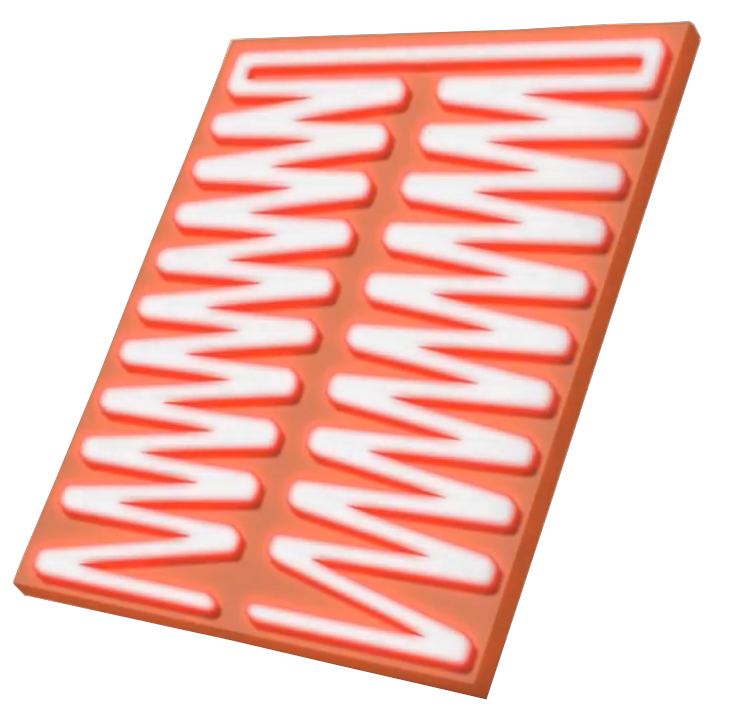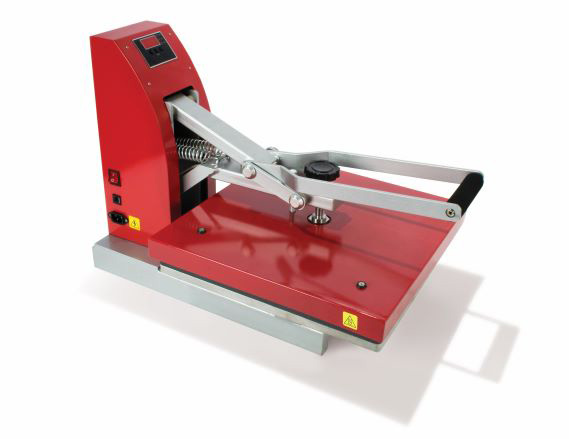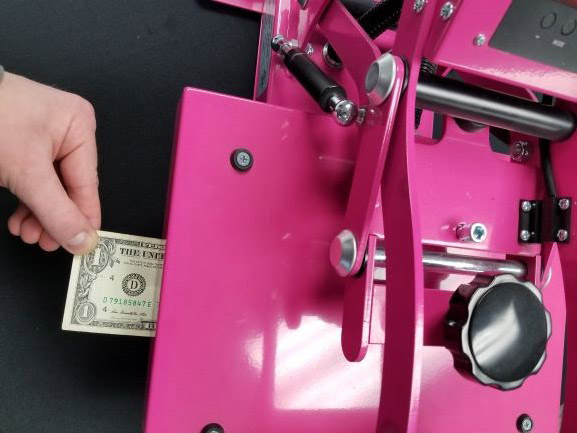In this blog, we are going to go over the three simple parts to what you will need to begin a custom garment business and start making money with Siser HTV!
There are 3 main things you need:
Before we get into the $$$ making, we explain vinyl cutters and heat presses to help you achieve the best results.
Vinyl Cutter
When shopping for a vinyl cutter, the biggest thing to look at is how large of a transfer you can cut in that specific cutter.
Most crafting cutters can only cut up to 12-inch width and range $200-$400. Prices for large industrial cutters can reach all the way up to $7,000.
For starters, a 12” craft vinyl cutter may work. For a reasonable cost, you can get started with the Brother ScanNCut, and see if this business is going to take you somewhere.
If your business takes off, or you suggest you want to begin with high volume production, we recommend a mid-size 15” cutter such as a Graphtec CE6000-60 Plus 15" Cutter, which starts at about $1200.
Keep in mind that the size of your cutter is going to really dictate how big of transfers you can create. Also, most vinyl cutters will come with their own design software. However, larger cutters such as Graphtec brand will allow plugins to use with Adobe Illustrator and Corel Draw for more advanced designing.
Heat Press
The Heat Press is the foundation of your heat transfer application. It is by far the most important piece of equipment! If you have a limited budget when shopping for all your equipment, we recommend starting with the best heat press that you can afford.
You can apply most of Siser HTV with a simple home iron, which makes that extremely convenient! But, if you know you were going to start a business, you’d want the confidence, efficiency, and quickness of a heat press. We highly recommend using a heat press when using Siser HTV. Especially if you are selling your finished goods to customers. A heat press will assure that your Siser transfer is properly bonded.
The 3 biggest factors when applying HTV are:
- Time
- Temperature
- Pressure
These factors are dependant on a good heat press. In fact, lacking in any one of these factors can and will lead to a failed application. It’s very important to have a heat press that can accurately measure all of these factors.
Time/Temperature
Think of the Heat Press as the “oven” for your Heat Transfer Vinyl. Then the Heat Transfer Vinyl that you are using provides the “recipe” for how you should set the “oven”. For example, if you buy a frozen pizza from the grocery store, different brands will vary in how you cook it. This same scenario applies to Heat Transfer Vinyl. The Heat Transfer Vinyl dictates how to set your Heat Press for that specific application.
As you may notice, Heat Presses of similar sizes can vary greatly in price. Even though you can’t always visually notice it, this price gap between Heat Presses in based on the quality and included warranty. When it comes to shopping for a Heat Press, you really get what you pay for.
One thing that you can’t visually see is the heating element within a heat press. A high-quality heat press will have a coiled heating element in the upper platen, which helps create consistency when pressing. Many of these high-quality heat presses will also include a lifetime warranty on the heating element. So, if in some rare occurrence that something does happen to your heat press, it is very unlikely that you will have to re-invest in a completely new heat press.
Some lower quality presses will not have this lifetime warranty and coiled heating element, which can result in “cold spots” on the heated platen and can impact the durability of your applied transfers.

At Heat Transfer Warehouse, we take pride in offering only the highest-quality Heat Press machines that all include coiled heated platens. These brands include Hotronix, HIX, Insta, Siser and Geo Knight.
Pressure
Now let’s talk about pressure. Pressure refers to the amount of force that is being pressed down or exerted on the Heat Transfer Vinyl by your heat press. Pressure is a very crucial factor in completing an effective heat transfer application. In fact, inadequate pressure is the most common cause of failed application and is the reason why Heat Transfer Vinyl peels or falls off after a wash cycle.
All Heat Transfer Vinyl from Heat Transfer Warehouse will provide you with what pressure is recommended for best application results. For example, they will indicate whether to use light, medium or firm pressure. To assist with this, some Heat Presses have a digital pressure readout. For Heat Presses with this feature, 1-3 is light, 4-6 is medium and 7-9 is firm pressure.
To adjust the pressure on any heat press, simply turn the over-the-center pressure adjustment knob.
For heat presses without a digital pressure readout, we recommend using the dollar bill or paper pressure test to gauge a good medium pressure. This test entails putting a dollar bill or pieces of paper in each edge of the heat press and adjusting the pressure until you can no longer move it or pull it out on all 4 edges.
A good rule of thumb is you should be able to slightly see the texture of the garment through the Heat Transfer Vinyl after you are done pressing. This applies to standard Heat Transfer Vinyl such as Siser EasyWeed or ThermoFlex Plus, and not necessarily thicker types of vinyl such as Glitter or Flock.
Making $$$ with Siser HTV
Now given all of these factors, let’s run through some numbers to see how much money we can make using Siser HTV.
- 10x10” design of EasyWeed will cost you about $2.00
- Total material cost = $4.74
- Employee wages = $10/hr (or you pay yourself because your time has value)
- Mins to produce = about 10 mins
- Labor cost per shirt = $1.67
- Total material and labor cost = $6.41
- Retail price = $20
- Profit per shirt = $13.59
- Profit per hour = $81.54
Overall, it would take 74 shirts to reach $1,000 in profit based on the sample numbers above.
At an average of 10 minutes to produce a shirt (which may decrease once you become more efficient), it would only take about 12.5 hours to make 74 shirts and get to that $1,000 in profit! Following this model, you could make $12,000 in profit if you dedicated 5 hours a day for 30 days, or knocked out 888 shirts!
Vinyl cutters and heat presses can be a hefty investment; however, you can quickly pay off the investments of heat pressing equipment. We hope you now realize the potential profits in dedicating your time to garment decorating using HTV.




